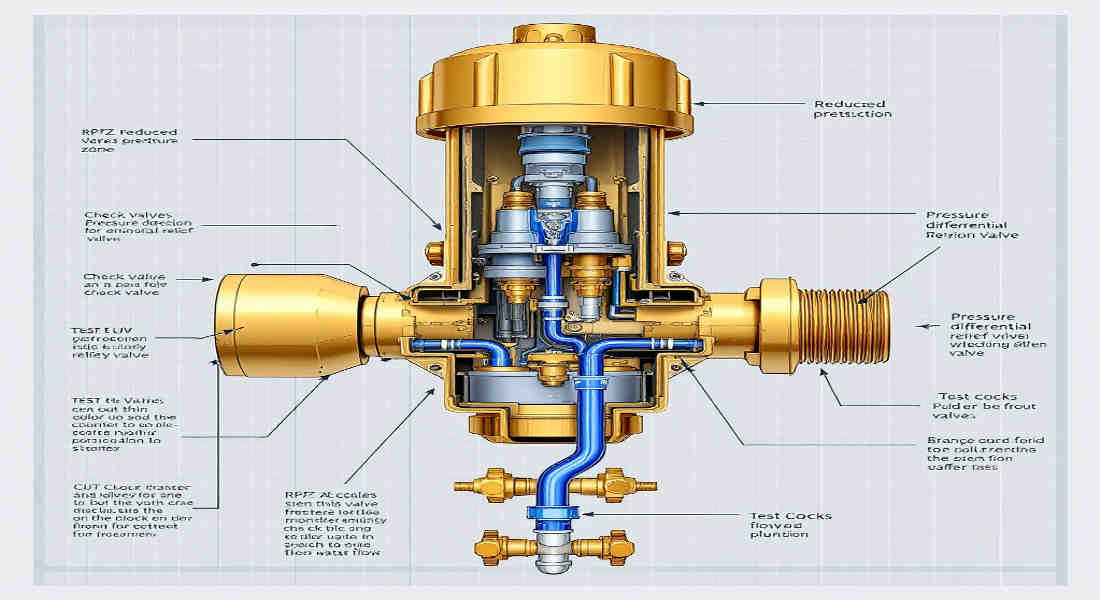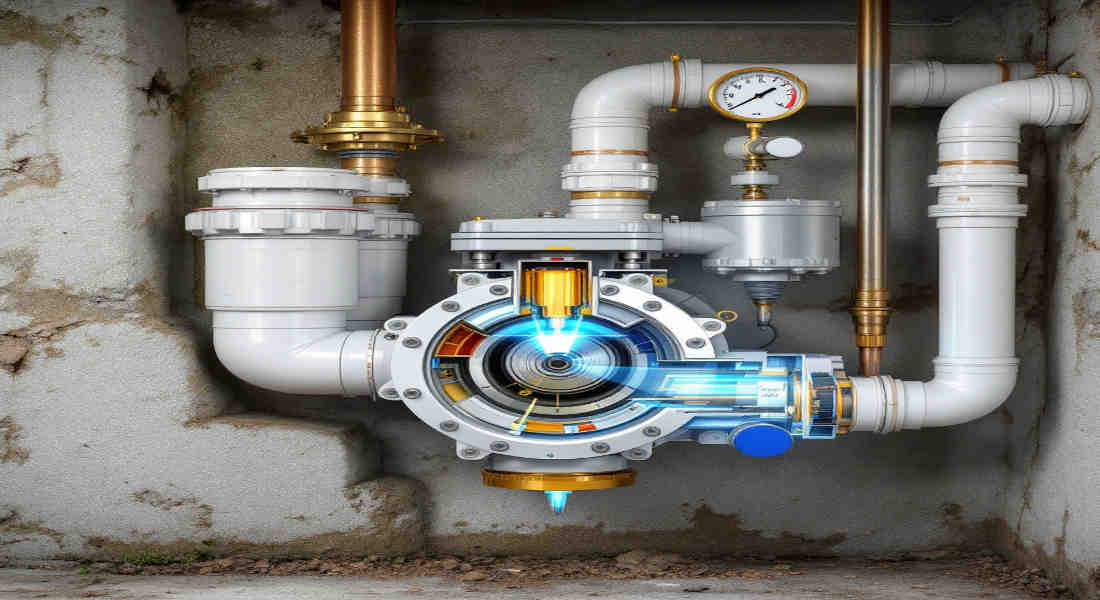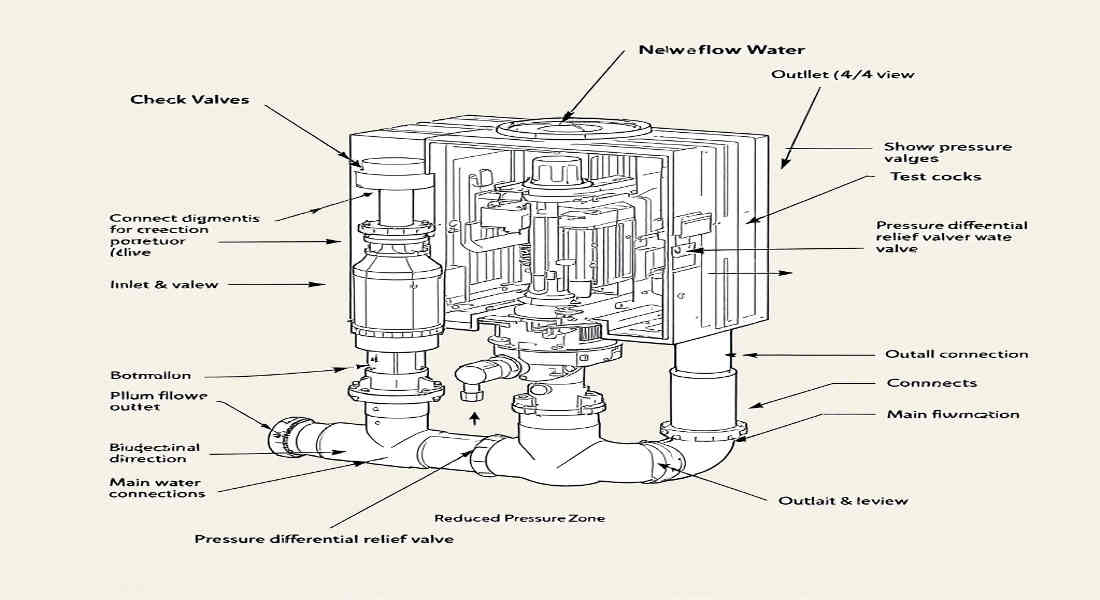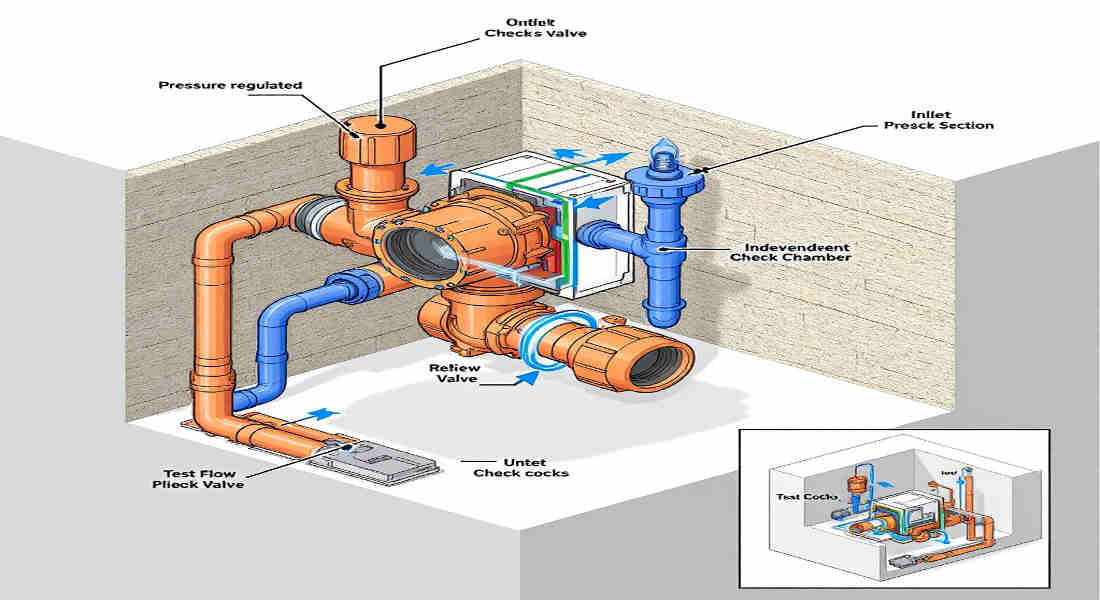Safe and clean water is fundamental to a healthy home. Whether it’s for drinking, cooking, or bathing, homeowners trust that their water supply is free from contaminants. However, water contamination is a real risk, particularly when backflow occurs in plumbing systems. This is where an RPZ valve plays a critical role.
What is an RPZ in House Plumbing?
Definition of RPZ (Reduced Pressure Zone) Valve
An RPZ valve, short for Reduced Pressure Zone valve, is a specialised plumbing device designed to prevent contaminated water from entering your clean water supply.
In simple terms, it’s a backflow prevention device. Backflow is when water flows in the opposite direction from where it should, potentially carrying harmful substances back into the water system. This can happen due to changes in pressure within the system, such as a drop in mains water pressure.
How RPZ Works in Plumbing Systems
The RPZ valve creates a barrier against backflow by maintaining a pressure differential. It ensures that water from potentially contaminated areas cannot mix with clean water.
For example, if you have a home irrigation system or a boiler, there’s a risk that substances like fertilisers, chemicals, or bacteria could backflow into your water supply. The RPZ valve acts as a guard, ensuring these contaminants are stopped in their tracks.
Why is RPZ Critical?
Without an RPZ valve, contaminated water could enter your home’s plumbing or even the municipal water supply, putting health and safety at risk. By installing an RPZ, homeowners can ensure that their water remains clean and safe for use.
How Does an RPZ Valve Work?
The Mechanics of an RPZ Valve
An RPZ valve consists of three key components:
You may also read (clean plumbing pipes at home).
- Two check valves: These allow water to flow in one direction but stop it from flowing backwards.
- A relief valve: This discharges water when it detects a pressure imbalance, preventing contaminated water from re-entering the system.
Together, these components ensure that water pressure downstream remains lower than the pressure upstream, eliminating the risk of backflow.
The Role of the Relief Valve
The relief valve is a safety measure that activates when the system detects backpressure or a drop in pressure. This ensures that any potentially contaminated water is safely discharged, rather than being allowed to flow into the clean water supply.
Comparison with Other Backflow Prevention Devices
While there are other devices like vacuum breakers or dual check valves, RPZ valves are considered superior. They provide a higher level of protection, especially in complex systems with greater contamination risks.
Device Protection Level Usage
Vacuum Breaker Basic Low-risk systems like garden taps
Double Check Valve Moderate Medium-risk systems like small boilers
RPZ Valve High High-risk systems like irrigation and fire systems
Common Applications of RPZ Valves in Residential Plumbing
RPZ valves are not found in every home but are critical for certain systems where backflow risks are higher.
Typical Installation Areas
- Irrigation and Sprinkler Systems
- Outdoor irrigation systems often use fertilisers and pesticides, which could contaminate the water supply if backflow occurs.
- Boilers and Heating Systems
- Boilers and heating systems may contain chemicals like anti-corrosion agents that could backflow into the water supply if proper protection isn’t in place.
- Fire Suppression Systems
- Fire sprinklers use stagnant water that can harbour bacteria. An RPZ valve ensures this water doesn’t mix with the clean supply.
You may also read (unlock the secrets of home plumbing riser diagrams).
Cross-Connection Risks
A cross-connection is any point where a clean water line connects with a potentially contaminated source. Without an RPZ valve, these connections could allow contaminants to enter the water supply.
Real-World Examples of Contamination
- Fertilisers and Pesticides: From lawn irrigation systems.
- Bacteria: From stagnant water in fire suppression systems.
- Heating Chemicals: From boiler systems.
Importance of RPZ Valves for Homeowners
Why Some Homes Need RPZ Valves
If your home has systems like irrigation, boilers, or fire sprinklers, you may be required by local codes to install an RPZ valve. These systems pose higher contamination risks, making RPZ valves essential for safety.
Consequences of Not Having Backflow Prevention
Without proper backflow prevention, contaminated water could enter your home’s plumbing, leading to serious health risks. It could also affect the municipal water supply, potentially resulting in legal or financial repercussions.
Protection for Municipal and Household Water
By using an RPZ valve, homeowners not only protect their household water but also help safeguard the wider community’s water supply.
Installation and Maintenance of RPZ Valves
Professional Installation
RPZ valves must be installed by certified plumbers to ensure compliance with local regulations and proper functionality. Incorrect installation can render the valve ineffective.
Annual Testing and Certification
Most regions require certified professionals to test RPZ valves annually. This ensures the valve is functioning correctly and offers homeowners peace of mind.
Common Maintenance Issues
- Relief Valve Discharge: Pressure fluctuations can cause the relief valve to release water. This is normal but may require adjustments.
- Costs: While installation and maintenance come with costs, they’re minimal compared to the expenses of dealing with water contamination.
Regulatory and Safety Standards
Plumbing Codes and Regulations
RPZ valves must comply with stringent plumbing codes, such as the Water Industry Approved Installation Method (AIM 08-01). Non-compliance can result in penalties.
Role of Certified Testers
Certified testers are crucial for ensuring the RPZ is operating correctly. They assess the valve annually and provide necessary certifications.
Importance of Compliance
Failing to comply with regulations not only jeopardises water safety but could also lead to fines or other legal actions.
Benefits of Installing an RPZ Valve in Your Home
- Enhanced Water Safety: Protects against contamination.
- Peace of Mind: Homeowners can rest assured their water supply is safe.
- Regulatory Compliance: Meets insurance or municipal requirements.
- Cost Savings: Prevents expensive contamination cleanups.
You may also read (unlocking the secrets of house plumbing plans).
